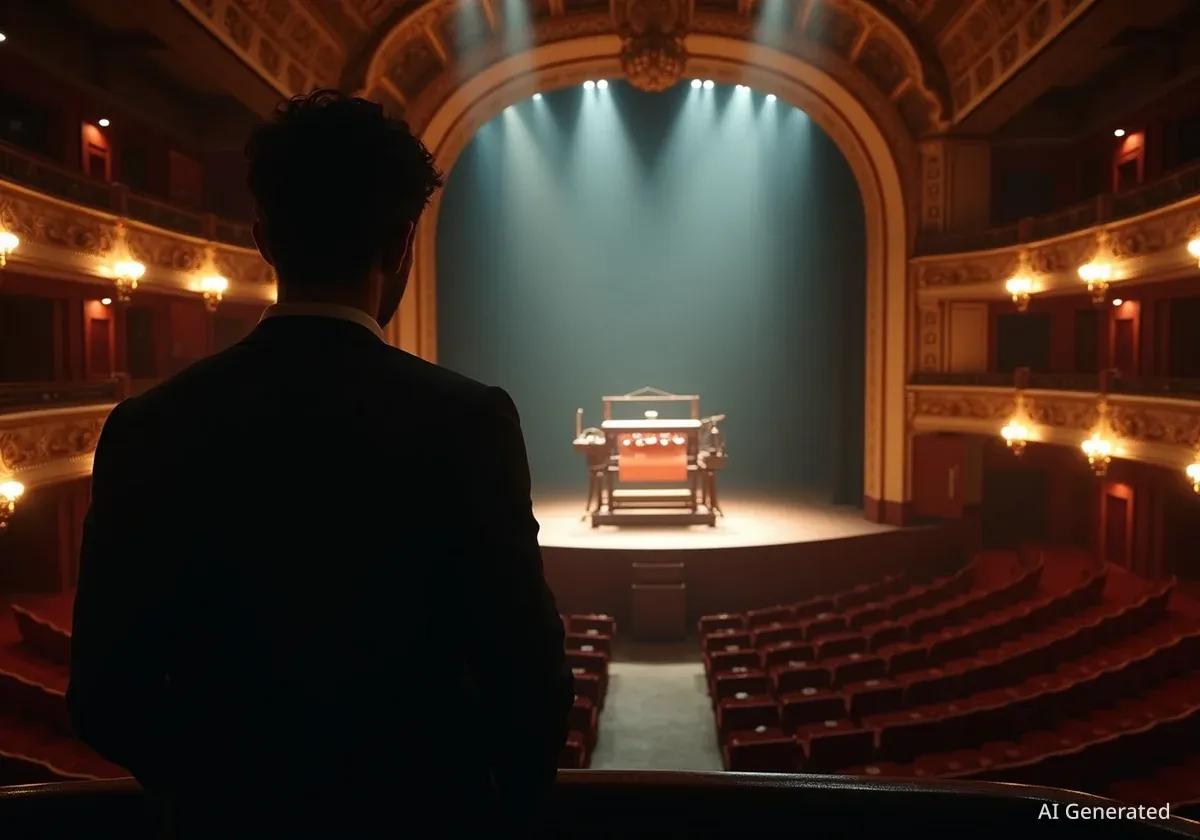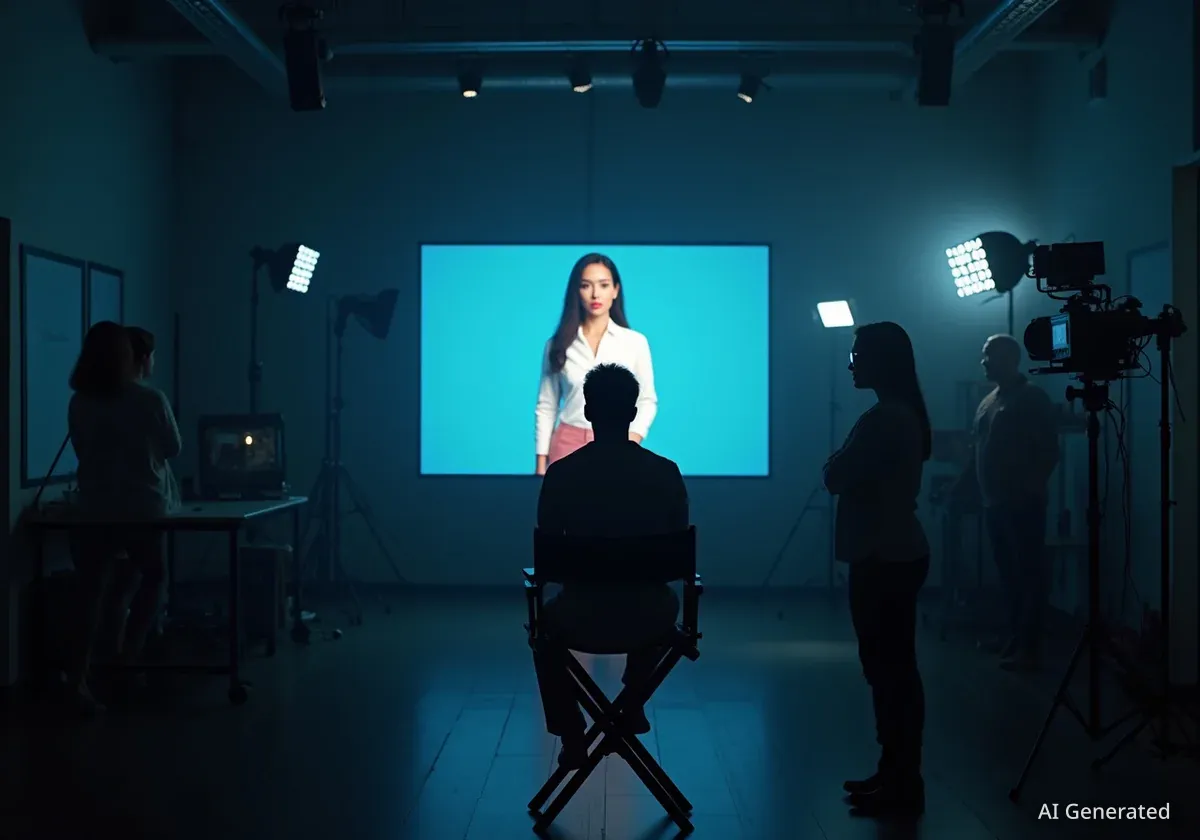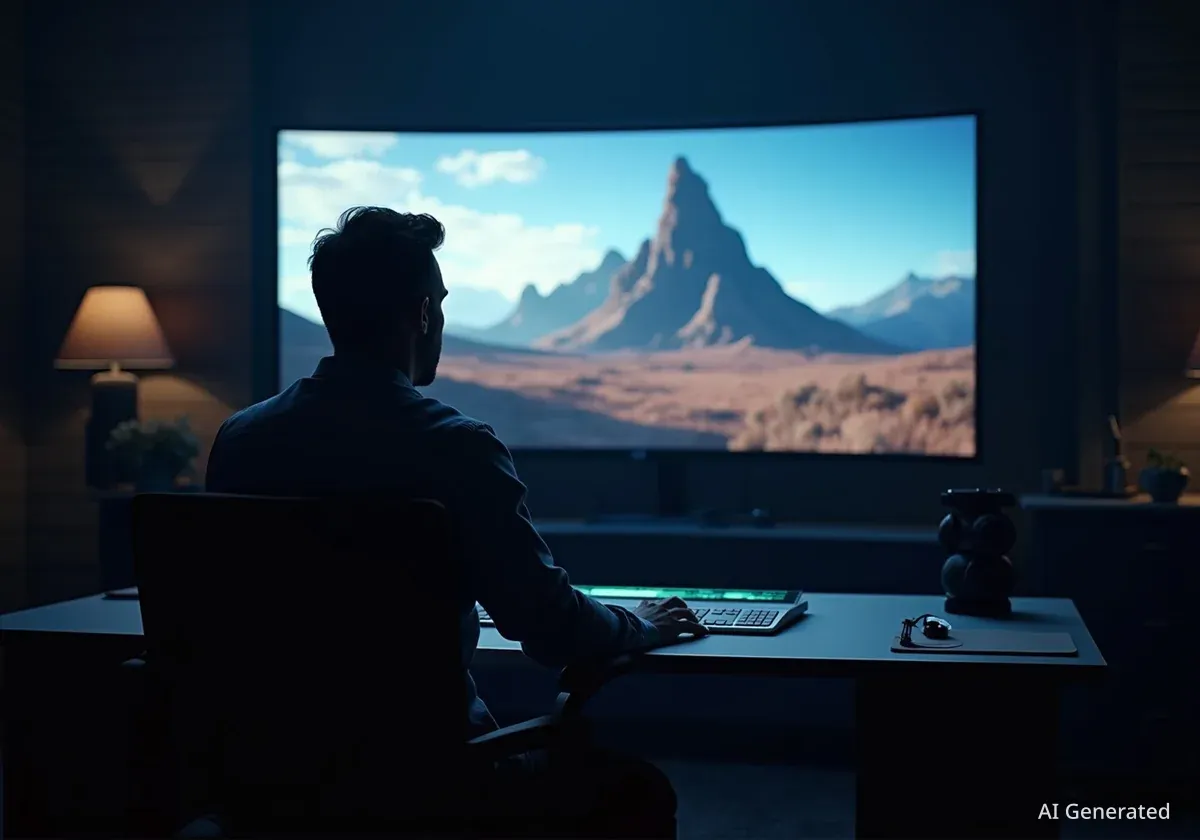A new opera set to premiere in Yorkshire this November will explore contemporary anxieties surrounding artificial intelligence by drawing parallels with the 19th-century Luddite movement. Titled The Last Machine Breaker, An Opera on Luddites, AI and Revolution, the work features a score by composer Ben Crick and a libretto by writer Kamal Kaan.
Commissioned by the Bradford opera festival, the production aims to re-examine the historical narrative of the Luddites, suggesting their motivations offer valuable lessons for navigating the societal impact of today's rapidly advancing technology.
Key Takeaways
- A new opera titled The Last Machine Breaker connects the 19th-century Luddites with modern debates on artificial intelligence.
- The work, by composer Ben Crick and librettist Kamal Kaan, will premiere in Yorkshire from November 10-16.
- The opera features a dual narrative, with one story set in 1813 following Luddite leader George Mellor and another in 2030 concerning a tech entrepreneur and a humanoid AI.
- Composer Ben Crick argues that the Luddites were not anti-technology but were concerned with the equitable distribution of wealth generated by new machines.
A Historical Mirror for a Modern Dilemma
As discussions about artificial intelligence and its effect on the labor market intensify, a new artistic work is looking to the past for answers. Composer Ben Crick believes the societal upheaval experienced in the north of England during the Industrial Revolution provides a crucial historical precedent for the challenges faced today.
"This sudden and abrupt increase in technology which is affecting the labour market, has already happened here," Crick stated, referring to the rapid industrialization of towns like Bradford and Huddersfield around 1812. "This question has been asked before – in the north of England. We found answers then which are not the ones we want to find this time. Let’s learn from that history."
The opera, a collaboration with librettist Kamal Kaan, was commissioned by the Bradford opera festival with the goal of making the art form more accessible and relevant to contemporary issues. Crick emphasizes that opera should be topical and engage with the pressing questions of our time, rather than solely repurposing historical works.
The Industrial Revolution in Yorkshire
In the early 19th century, West Yorkshire was the epicenter of the woolen and worsted textile industry. The introduction of new machinery, such as power looms and shearing frames, dramatically increased production efficiency but also threatened the livelihoods of skilled textile workers, leading to widespread social and economic distress.
Revisiting the Luddites: More Than Machine-Wreckers
A central theme of the opera is to challenge the modern stereotype of the Luddite as someone who is simply anti-progress or fearful of new technology. Crick argues this perception is a historical oversimplification.
"This idea that they’re just backward-thinking people that tried to stop the inevitable march of progress is nonsense. It’s not right," he explained. According to Crick, the Luddites initially pursued peaceful and political solutions to address their concerns about technology's impact.
Before resorting to destroying machinery, the workers took several steps:
- They petitioned Parliament to regulate the use of the new machines.
- They asked mill owners to establish a fund to support workers displaced by automation.
- They sought dialogue, stating they only wanted to prevent technology's implementation where it was "injurious to the working man."
"What [the luddites] were trying to do was stop the monopoly of the wealth that technology created being in the hands of a few people. There was this massive divide in society with mill owners, unbelievably wealthy and the populace starving." - Ben Crick, Composer
Crick suggests that their actions were a last resort born from economic desperation and the failure of other avenues. He sees a direct parallel to current debates about AI, where questions of wealth distribution and job displacement are paramount. "My argument is that if we address those concerns before that point, we can stop the descent to violence," he added.
Dual Narratives Connecting Past and Future
The Last Machine Breaker employs a unique structure, telling two parallel stories separated by more than two centuries. This dual narrative is designed to highlight the recurring nature of questions about technology and humanity.
The first storyline is set in 1813 and follows the historical Luddite leader, George Mellor, as he awaits his execution. This plotline delves into the human cost of the Industrial Revolution and the motivations behind the Luddite resistance.
The second storyline jumps forward to the year 2030. It centers on a modern tech entrepreneur who has developed a sophisticated humanoid AI. This narrative explores the ethical and existential questions that arise from creating artificial consciousness and its potential impact on society.
Who was George Mellor?
George Mellor (1788-1813) was a cropper from Huddersfield and a prominent leader of the Luddite movement in Yorkshire. He was convicted and executed for his alleged role in the murder of mill owner William Horsfall. His story represents the high stakes and tragic outcomes of the industrial conflict.
By weaving these two timelines together, the opera poses a central question: will technological progress be humanity’s salvation or its downfall? The production aims not to provide simple answers but to provoke thought and discussion among the audience.
Artistic Creation in the Age of AI
As a composer, Crick acknowledges his own concerns about the role of AI in creative fields. He notes that the process AI uses—analyzing and synthesizing vast amounts of existing data—is not entirely different from how human artists learn and create.
"A great part of our work is an amalgamation of previous generations and that’s what AI is doing," Crick observed. "So as it only gets better over the next 100 years, 150 years, it is doing the same process that the human artists are doing."
Despite these worries, his stance is not one of opposition. "AI is here," he said. "We can’t stop it. We shouldn’t want to stop it." Instead, he believes the opera serves as a platform to ask the necessary questions about how society should manage this powerful new tool.
The premiere of The Last Machine Breaker, An Opera on Luddites, AI and Revolution is scheduled to run from November 10 to 16 at various venues across Yorkshire, bringing a 200-year-old story to the forefront of a very modern debate.



